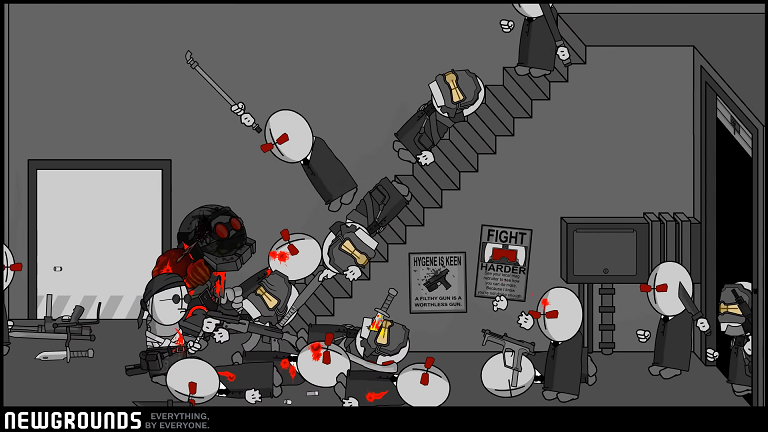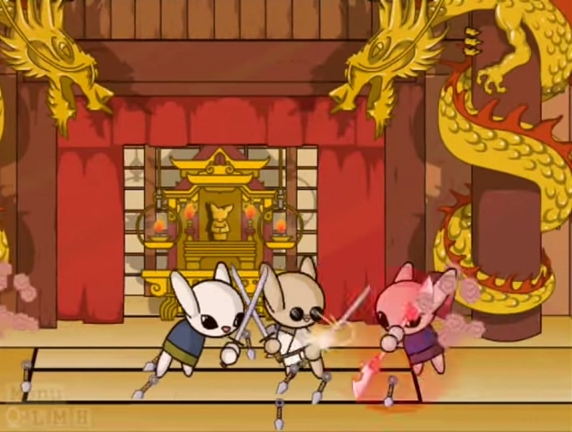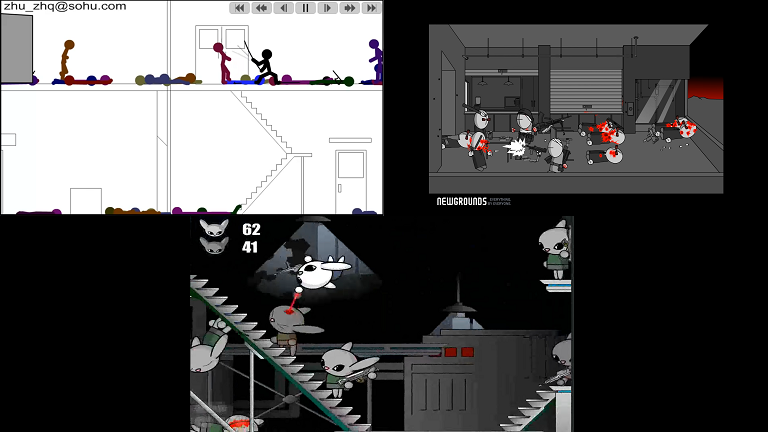Bunnykill was the height of flash animation
If you’ve visited Newgrounds at any point in your life, you will doubtless have came across Madness Combat, even if you don’t recognise it by name. Here’s a quick reminder, to get you up to speed:

To any teenager growing up in the mid-2000s, Madness Combat was king. This was the cartoon everybody crowded round the school computers to watch together. It became a juggernaut of a franchise, spawning dozens of official entries, and thousands of imitators (well over 200 tribute cartoons were released in 2007 alone ↗). It perfectly encapsulated the idea of internet media, boundary-pushing creations by a small team, with zero oversight or executive meddling.
Then, at the height of the craze, Bunny Kill emerged.

Starting out with the original Bunny Kill cartoon, a middling Madness rip-off, the series eventually grew into the underrated champion of brawler flash cartoons, culminating in the 25 minute, two parter, Bunnykill 5, which is not only one of the greatest action flash-animations, but possibly one of the greatest solo animations ever made. But I’m getting slightly ahead of myself.
Jumping all the way back to the second instalment, it was clear Bunnykill 2 has a potential leg up on the competition. While most shorts in this genre merely focused on upping the raw violence and body-count, BK was already putting a much greater emphasis on fluid, stylish acrobatics. The main protagonist, Snowball, had a greater range of movement than Madness’ Hank, and used this to implement much flashier and more complex hand-to-hand and sword play than its rivals, taking clearer inspiration from the classic Xiao Xiao stick cartoons that preceded Madness.

Bunnykill 3 upped the ante further, showing that the genre had room for character development and personalities. While the series had already been more expressive than Madness (owing to the character’s having actual facial expressions), this entry pushed further, adding not only several small expressive flourishes to several of the interactions, but also giving this incarnation of Snowball a character arc of sorts. He is shown to be the rookie agent, inferior to more experienced and confident Smoke. At several points, Snowball loses the advantage in fights, allowing for narrative tension, as well as humanising him just a little bit. At the end of the second part, watching him succeed where Smoke had failed, it was satisfying.
The fourth episode was very much the odd one out of the franchise, taking place in feudal Japan, and much further emphasising the anime influences in combat, with the addition of ninjutsu and energy attacks. It’s also the only entry to feature a love interest. While none of these elements really carried over into the final instalment, the improvements in visuals and effects might not have happened without it, and it’s still a great little cartoon.
And finally, we reach the apex: Bunnykill 5. It takes everything that made the previous entrys great, and then polishes them to near-perfection. There’s nothing that can really be said that the episodes don’t say for themselves, so here they are.
Beautiful.
«Back to "Stuff I Like"»
